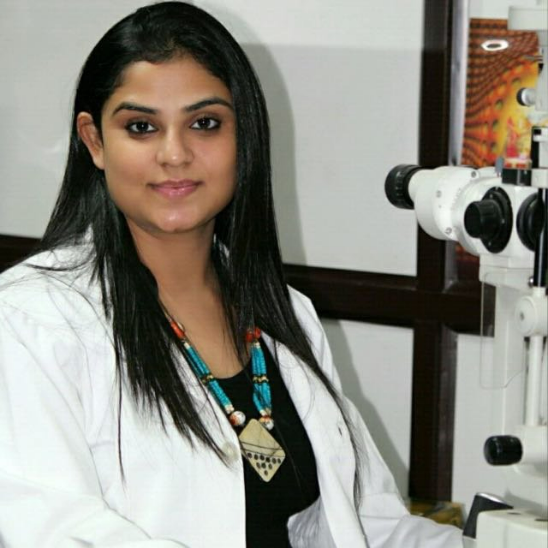Eye Cancer Symptoms In Kids: Types, Symptoms And Causes Of Eye Cancer In Kids
Learn about eye cancer symptoms in kids, including early signs, causes, and treatments. Understand how prompt detection and care can protect children's health and vision.

Written by Dr Sonia Bhatt
Last updated on 3rd Jul, 2025
Eye cancer in children, though uncommon, poses a significant health risk that can affect vision and overall quality of life. Early detection is crucial, and timely medical intervention can lead to better outcomes.
This article is all about pediatric eye cancer- its symptoms, causes, diagnostic tests, and treatment options to assist parents and caregivers in understanding this serious condition.
Types and Symptoms of Eye Cancer in Children
Eye cancer encompasses various malignant growths within the eye tissues. In children, the most common types include:
- Retinoblastoma: It is an eye cancer that typically affects children under 5, originating in the retina, the light-sensitive layer at the back of the eye.
- Medulloepithelioma: It is a congenital tumour arising from the ciliary body or uvea, often present at birth.
- Rhabdomyosarcoma: It is a malignant tumour of the muscles attached to the eye, leading to symptoms such as a bulging eye or drooping eyelid.
There are various symptoms of eye cancer in children. Changes in the child’s vision can be an early indicator of this disease. Young children may lack the vocabulary to express these changes, so parents should look for:
- White pupillary reflex (Leukocoria): A white or yellowish luminescence in the pupil often detected in flash photos
- Eye misalignment (Strabismus): When one or both of the eye is turned away and does not align properly
- Visual disturbances: Reports of blurred vision or trouble focusing on objects
Besides the visual symptoms, eye cancer can also present physical changes, including:
- Proptosis: Swelling or bulging of the eyes
- Redness or irritation: Ongoing redness which does not respond to normal treatments
- Pain: A discomfort or pain surrounding the eye
- Eye appearance changes: A bulged eye or abnormal spots in the iris
Causes and Risk Factors
Some of the key causes are as follows:
- Genetic factors, such as Retinoblastoma, are partly caused by mutations in the Retinoblastoma (RB1) gene, which plays a key role in regulating cell division. This mutation can also be inherited, with a family history of Retinoblastoma greatly increasing the risk.
- While genetics is the main causative factor in eye cancer, it is thought that certain environmental exposures, in particular radiation exposure or exposure to certain chemicals, may also play a role in the development of this type of cancer.
But these factors are not as well defined in children.
Diagnosis of Eye Cancer in Children
If symptoms point to the possibility of eye cancer, children need to see either a paediatric ophthalmologist or an ophthalmologist or oncologist who specialises in treating these conditions.
Key diagnostic tools include:
- Eye Exam: A comprehensive assessment with specialised tools
- Imaging Tests: Ultrasound, MRI (Magnetic Resonance Imaging), or CT (Computed Tomography) scans to identify tumours and understand their size and location
- Biopsy: In very few cases, a tissue sample would be required to confirm the diagnosis
The sooner it’s diagnosed, the more treatment options one has with better chances of preserving eyesight and health. Regular eye examinations are key in detecting problems early before serious symptoms develop.
Stages of Eye Cancer in Children
Staging helps determine the severity and spread of the disease. It often varies from intraocular (limited to the eye) to extraocular (spread outside the eye).
- Intraocular: Often treatable with minimally invasive measures
- Extraocular: Requires more aggressive treatments and has a poorer prognosis
Treatment Options for Pediatric Eye Cancer
If the tumour cannot be removed, surgery may involve enucleation (removing the affected eye) to prevent the cancer from spreading.
The normal options include:
- Radiation Therapy: Uses targeted beams to reduce tumours while preserving surrounding tissues
- Chemotherapy: Applied systemically or locally to kill cancer cells
Prognosis and Long-term Outlook
Retinoblastoma has an effective prognosis with early detection. The five-year ‘survival rate’ for intraocular Retinoblastoma in developed countries is greater than 95%.
Long-term consequences can include loss of vision, secondary cancers, or developmental delays. Regular follow-up care is important for identifying recurrence as well as managing further side effects.
Emotional and Psychological Support for Families
A cancer diagnosis, especially in a child, can be emotionally overwhelming for families. Support groups, counselling, and community resources play a vital role in helping families cope. For paediatric cancer, various organisations offer educational materials, financial assistance, and emotional support programs to ease the burden.
These resources provide crucial relief, helping families manage stress and find comfort during challenging times. Families can also find strength through connecting with others facing similar experiences. Seeking professional help when needed can improve emotional well-being and foster resilience.
Conclusion
Early recognition of paediatric eye cancer symptoms, access to treatment options, and supportive resources can significantly improve outcomes for affected children. Raising awareness, encouraging timely diagnosis, and funding research are crucial steps in mitigating the impact of this disease on young lives.
Additionally, providing emotional and psychological support to families is essential for helping them navigate the challenges of a cancer diagnosis. This support plays a key role in fostering overall well-being during treatment.
Consult Top Ophthalmologists
Consult Top Ophthalmologists

Dr. Anupa Gulati
Ophthalmologist
25 Years • MBBS, Dip in Ophthalmology
New Delhi
Visitech Eye Centre Green Park, New Delhi
Dr. S Venkateswaran
Ophthalmologist
35 Years • MBBS, PGD (OPTHALMOLOGY)
Tiruvannamalai
Shiva Eye And General Hospital, Tiruvannamalai

Dr. Dipak Soni
Ophthalmologist
22 Years • MBBS,DO
Vadodara
Shiv Shakti Eye Clinic Phaco Centre, Vadodara

Dr. Anchal Gupta
Ophthalmologist
10 Years • MBBS,MS ( Opthamology )
New Delhi
NETRAM EYE FOUNDATION, New Delhi

Dr. Sahiti Salguti
Ophthalmologist
10 Years • MBBS,MS Ophthalmology
Hyderabad
Yeshass Nethralaya eye hospital, Hyderabad
